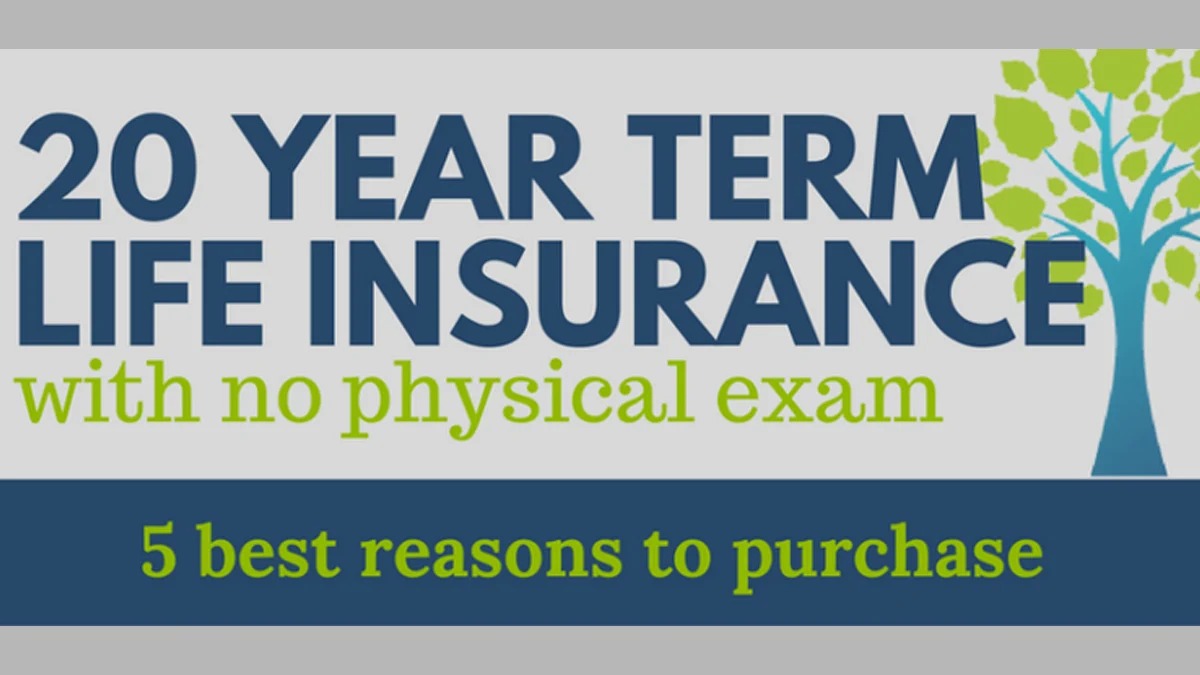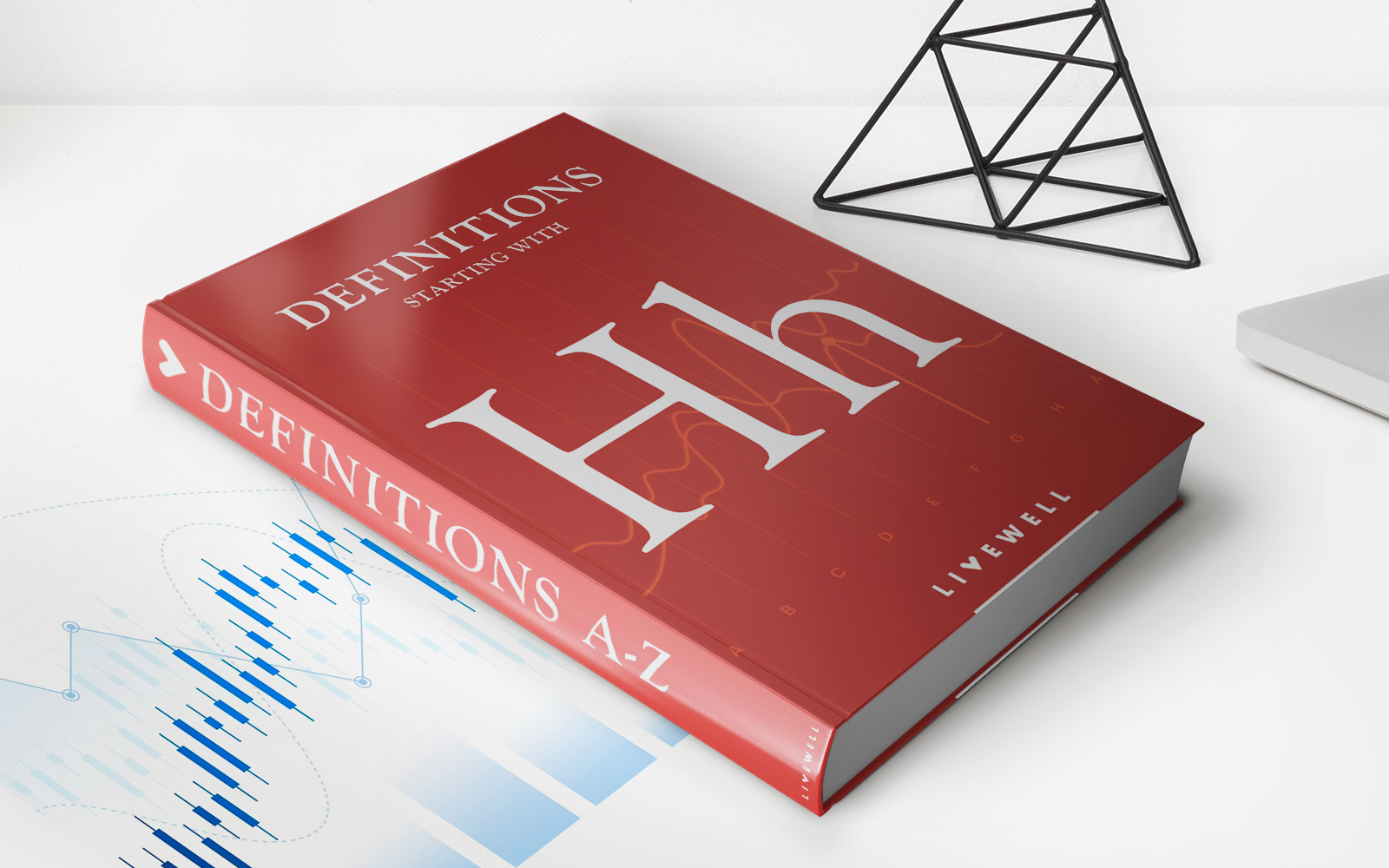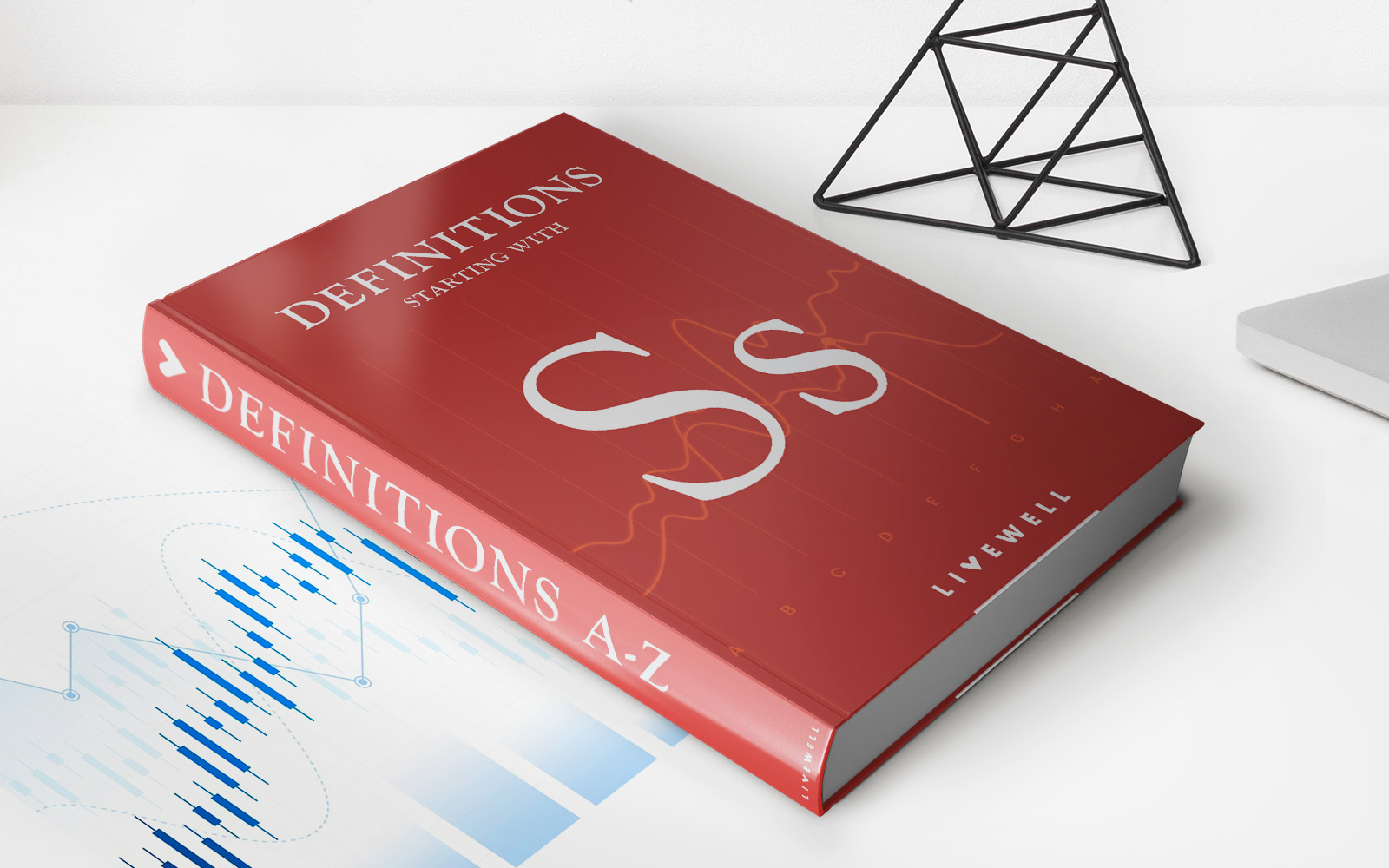

Finance
What Does 10 Year Term Life Insurance Mean?
Published: November 12, 2023
Learn the meaning of 10 year term life insurance and how it can provide financial security for your loved ones. Understand the benefits and coverage offered by this type of policy.
(Many of the links in this article redirect to a specific reviewed product. Your purchase of these products through affiliate links helps to generate commission for LiveWell, at no extra cost. Learn more)
Table of Contents
Introduction
Life insurance is an essential financial tool that provides protection and peace of mind for you and your loved ones. With so many different types of life insurance available, it can be overwhelming to decide which policy is the right one for you. One popular option is term life insurance, which offers coverage for a specific period of time.
In this article, we will explore the concept of term life insurance and delve into the specifics of a 10-year term life insurance policy. Whether you’re a young professional starting a family, a parent planning for your children’s future, or someone looking for temporary coverage, understanding what a 10-year term life insurance policy entails can help you make an informed decision about your life insurance needs.
Before we dive into the details of a 10-year term life insurance policy, it’s important to have a basic understanding of term life insurance in general. Unlike permanent life insurance policies such as whole life or universal life insurance, term life insurance provides coverage for a specific period, typically ranging from 10 to 30 years. If the policyholder passes away during the term of the policy, the beneficiaries receive a death benefit.
Term life insurance is a popular choice for individuals who are looking for affordable coverage for a specific time period. It offers flexibility, as you can choose the term length that aligns with your financial goals and the age of your dependents. Now, let’s take a closer look at what a 10-year term life insurance policy means and the features and benefits it offers.
Understanding Term Life Insurance
Before we delve into the specifics of a 10-year term life insurance policy, let’s first gain a better understanding of term life insurance as a whole. Term life insurance is a type of life insurance that provides coverage for a specified period, or “term,” typically ranging from 10 to 30 years. Unlike permanent life insurance policies, such as whole life or universal life insurance, term life insurance does not have a cash value component.
The primary purpose of term life insurance is to provide financial protection for your loved ones in the event of your untimely death. If you pass away during the term of the policy, your beneficiaries will receive a death benefit, which can be used to cover expenses such as mortgage payments, living expenses, education costs, and other financial obligations.
One of the key benefits of term life insurance is its affordability. Since term life insurance provides coverage for a specific period, the premiums are typically lower compared to permanent life insurance policies. This makes term life insurance a popular choice for individuals who want to ensure their loved ones are financially protected during a specific phase of life, such as raising children or paying off a mortgage.
Term life insurance offers flexibility in choosing the duration of coverage. Typically, insurance companies offer term lengths of 10, 15, 20, 25, or 30 years. The choice of term length depends on various factors, including your age, financial goals, and the needs of your dependents. It’s important to select a term that aligns with your specific circumstances.
It’s worth noting that term life insurance policies have a specified term, beyond which the coverage expires. Once the term ends, you may have the option to renew the policy, convert it into a permanent life insurance policy, or let it expire. However, it’s essential to keep in mind that renewing or converting the policy may result in higher premiums due to factors such as age and health changes.
Now that we have a solid understanding of term life insurance, let’s explore the features and benefits of a 10-year term life insurance policy in more detail.
What is a 10 Year Term Life Insurance?
A 10-year term life insurance policy is a specific type of term life insurance that provides coverage for a period of 10 years. It is a popular choice for individuals who have short-term financial obligations or want coverage during a specific phase of their lives.
With a 10-year term life insurance policy, you pay regular premiums for the duration of the 10-year term. If you pass away during this time, your beneficiaries will receive the death benefit specified in the policy. However, if the policy term expires and you are still alive, there is no payout or return of premiums.
One of the key advantages of a 10-year term life insurance policy is its affordability. Since the coverage is for a shorter duration, the premiums are typically lower compared to longer-term policies. This makes it an attractive option for individuals who want to ensure their loved ones are protected, but may have budget constraints or anticipate a change in financial circumstances in the near future.
Another benefit of a 10-year term life insurance policy is its flexibility. It allows policyholders to align their coverage with specific milestones or events. For example, if you have young children and want financial protection until they reach a certain age or become financially independent, a 10-year term policy can be a suitable choice.
Additionally, a 10-year term life insurance policy can be a smart option for individuals who have taken on short-term loans, such as a mortgage or business loan. It provides coverage during the period when these financial obligations are most significant.
It’s important to note that a 10-year term life insurance policy is not renewable at the same rates after the initial term expires. If you wish to continue the coverage beyond the 10-year term, you may have the option to renew the policy, convert it into a permanent policy, or seek a new policy altogether. However, it’s crucial to consider that renewing or converting the policy may come with higher premiums based on your current age and health status.
Now that we understand what a 10-year term life insurance policy entails, let’s explore its features and benefits in more detail.
Features of 10 Year Term Life Insurance
A 10-year term life insurance policy comes with several features that make it a popular choice for individuals seeking short-term coverage. Let’s take a look at some of the key features of a 10-year term life insurance policy:
1. Coverage Duration:
The primary feature of a 10-year term life insurance policy is its fixed duration of coverage. This means that you will have life insurance protection for a period of 10 years from the date the policy goes into effect. If you pass away during this time, the death benefit will be paid out to your beneficiaries.
2. Premiums:
The premiums for a 10-year term life insurance policy are typically lower compared to policies with longer terms. This is because the duration of coverage is shorter, and there is a lower risk of the insurance company having to pay out the death benefit. The premiums are determined based on factors such as your age, health, and lifestyle at the time of policy purchase.
3. Death Benefit:
The death benefit is the amount of money that will be paid out to your beneficiaries if you pass away during the 10-year term. It is typically a tax-free lump sum payment and can be used by your loved ones to cover funeral expenses, outstanding debts, mortgage payments, education costs, and other financial obligations.
4. Flexibility:
A 10-year term life insurance policy offers flexibility in terms of coverage duration. If your financial needs change or you no longer require life insurance after the 10-year period, you have the option to let the policy expire. On the other hand, if you still need coverage at the end of the term, you may have the option to renew the policy or convert it into a permanent life insurance policy, though this may come with higher premiums.
5. Conversion Option:
Many 10-year term life insurance policies come with a conversion option, which allows you to convert the policy into a permanent life insurance policy, such as whole life or universal life insurance. This can be beneficial if you anticipate a longer-term need for life insurance coverage or want the flexibility to build cash value over time.
6. Riders:
Some insurance companies may offer optional riders that can be added to the 10-year term life insurance policy to enhance its coverage. Common riders include those for critical illness, disability, or accelerated death benefits, which allow you to receive a portion of the death benefit in advance if you are diagnosed with a qualifying illness or become disabled.
These features make a 10-year term life insurance policy a flexible and affordable option for individuals seeking short-term coverage. In the next section, we will explore the benefits of a 10-year term life insurance policy in more detail.
Benefits of 10 Year Term Life Insurance
Choosing a 10-year term life insurance policy offers several benefits that can provide peace of mind and financial security for you and your loved ones. Let’s explore some of the key benefits:
1. Affordability:
One of the primary benefits of a 10-year term life insurance policy is its affordability. Since the coverage is for a shorter duration, the premiums are typically lower compared to longer-term policies. This makes it a practical choice for individuals who want to protect their loved ones without straining their budget.
2. Temporary Financial Protection:
A 10-year term life insurance policy provides temporary financial protection for a specific period. This can be especially useful if you have short-term financial obligations, such as paying off a mortgage, business loans, or sending your children to college. It ensures that your loved ones are financially supported during this critical phase.
3. Coverage Customization:
With a 10-year term life insurance policy, you have the flexibility to choose a coverage duration that aligns with your specific needs. Whether you need protection until your children reach a certain age or until you can build up your savings, you can tailor the coverage to match your unique circumstances.
4. Ease of Comparison Shopping:
Since term life insurance is a popular type of coverage, there are many insurance companies that offer 10-year term policies. This allows for easy comparison shopping, helping you find the best rates and coverage options to suit your needs.
5. Conversion Options:
Many 10-year term life insurance policies come with conversion options. This means that at the end of the 10-year term, you have the option to convert the policy into a permanent life insurance policy, such as whole life or universal life insurance. This can be beneficial if you want to continue the coverage beyond the initial term or if your needs evolve over time.
6. Peace of Mind:
By having a 10-year term life insurance policy in place, you can have peace of mind knowing that your loved ones will be financially protected in the event of your untimely passing. This can alleviate worries about the future and provide a sense of security for you and your family.
These benefits make a 10-year term life insurance policy an attractive option for individuals who have short-term financial obligations or want coverage during a specific phase of their lives. However, it’s important to consider the drawbacks of a 10-year term life insurance policy as well, which we will explore in the next section.
Drawbacks of 10 Year Term Life Insurance
While a 10-year term life insurance policy offers many benefits, it’s important to consider its drawbacks before making a decision. Here are some of the potential drawbacks of a 10-year term life insurance policy:
1. Limited Coverage Duration:
Unlike permanent life insurance policies, which provide coverage for your entire lifetime, a 10-year term life insurance policy has a limited duration. If you outlive the policy term, you will no longer have life insurance coverage. This can be a disadvantage if you anticipate needing coverage beyond the initial 10-year period.
2. Renewal at Higher Premiums:
If you wish to continue your life insurance coverage after the 10-year term expires, you will have the option to renew the policy. However, renewing the policy typically comes with higher premiums, as your age and health status may have changed since the policy was initially issued. This can make the policy less affordable in the long run.
3. No Cash Value:
A 10-year term life insurance policy does not accumulate any cash value over time. Unlike permanent life insurance policies that have a savings component, a term life policy only provides a death benefit. This means that you do not have the option to borrow against the policy or access any accumulated funds.
4. Rates Can Increase:
While the premiums for a 10-year term life insurance policy are initially affordable, it’s important to consider that the rates may increase if you choose to renew the policy. As you age, the risk of mortality increases, and insurance companies account for this by charging higher premiums for renewed policies.
5. Limited Conversion Options:
While some 10-year term life insurance policies offer conversion options, the available options may be limited. You may not have the flexibility to convert the policy into certain permanent life insurance policies or may have restrictions on the conversion process. It’s important to review the conversion terms and options before purchasing the policy.
6. No Return of Premium Option:
Unlike some other types of term life insurance policies, a 10-year term policy does not offer a return of premium option. This means that if you outlive the policy term, you will not receive any money back. If having the option for a return of premium is important to you, you may want to explore other types of term policies or permanent life insurance options.
Considering these drawbacks along with the benefits of a 10-year term life insurance policy will help you make an informed decision about the type of life insurance coverage that best meets your needs and financial goals.
Is a 10 Year Term Life Insurance Right for You?
Deciding on the right life insurance policy is a personal choice that depends on your individual circumstances and financial goals. While a 10-year term life insurance policy has its benefits and drawbacks, it may be the right choice for you under certain circumstances. Consider the following factors to determine if a 10-year term life insurance policy aligns with your needs:
1. Short-term Financial Obligations:
If you have short-term financial obligations, such as paying off a mortgage, business loans, or supporting your children until they become financially independent, a 10-year term life insurance policy can provide the necessary coverage during this period.
2. Budget Constraints:
If you have budget constraints and are looking for affordable life insurance coverage, a 10-year term life insurance policy offers lower premiums compared to policies with longer terms. It can be a cost-effective option to protect your loved ones without straining your finances.
3. Temporary Coverage Needs:
If you anticipate a change in your financial circumstances or only need coverage for a specific phase of your life, a 10-year term life insurance policy can provide the temporary coverage you require. It allows you to align your coverage duration with your specific needs and obligations.
4. Flexibility:
A 10-year term life insurance policy offers flexibility in terms of coverage duration. If you are unsure about your long-term life insurance needs or want the option to assess your coverage requirements periodically, a 10-year term policy allows you to reassess your needs at the end of the term without any obligations.
5. Conversion Options:
If you foresee a longer-term need for life insurance coverage or anticipate a change in your circumstances, it is essential to consider the conversion options available with a 10-year term life insurance policy. Some policies allow you to convert your policy into a permanent life insurance policy without the need for a medical exam.
On the other hand, if you are seeking lifetime coverage, want to accumulate cash value over time, or are looking for a policy that offers more flexibility and customization, a 10-year term life insurance policy may not be the best fit for you. Exploring other types of life insurance, such as whole life or universal life policies, may better suit your long-term needs.
Ultimately, the decision of whether a 10-year term life insurance policy is right for you depends on your unique circumstances, financial goals, and coverage needs. Consider evaluating your current and future obligations, budget, and the potential trade-offs of the policy before making a final decision.
Conclusion
Choosing the right life insurance policy is a crucial step in securing financial protection for you and your loved ones. A 10-year term life insurance policy can offer an affordable and flexible solution for individuals with short-term financial obligations or specific coverage needs.
Throughout this article, we have explored the concept of term life insurance and dived into the specifics of a 10-year term life insurance policy. We discussed its features, benefits, drawbacks, and considerations to help you make an informed decision about whether it’s the right option for you.
A 10-year term life insurance policy provides coverage for a specific duration, typically 10 years, and offers affordable premiums. It offers flexibility in aligning coverage with short-term financial obligations, such as paying off a mortgage or supporting children until they become financially independent.
However, it’s important to consider the limitations of a 10-year term policy, such as the absence of cash value accumulation, potential premium increases upon renewal, and the limited duration of coverage. If you anticipate needing coverage beyond the initial 10-year term or seek additional features, other types of life insurance policies may be more suitable.
Ultimately, the decision of whether a 10-year term life insurance policy is right for you depends on your unique circumstances, financial goals, and coverage needs. Consider evaluating factors such as your short-term financial obligations, budget, and desired flexibility in coverage duration.
Remember to review and compare policies from different insurance providers, as terms and conditions, conversion options, and additional features can vary. It’s also advisable to consult with a financial advisor or insurance professional who can provide personalized guidance based on your individual needs.
By carefully assessing your needs and considering the benefits and drawbacks, you can make an informed decision regarding a 10-year term life insurance policy or choose alternative life insurance coverage that aligns with your long-term financial goals.














